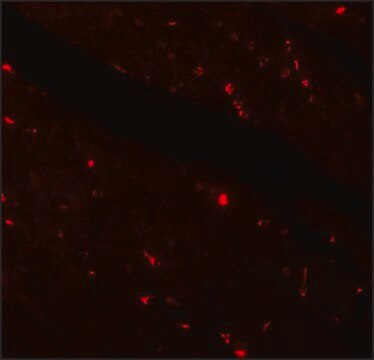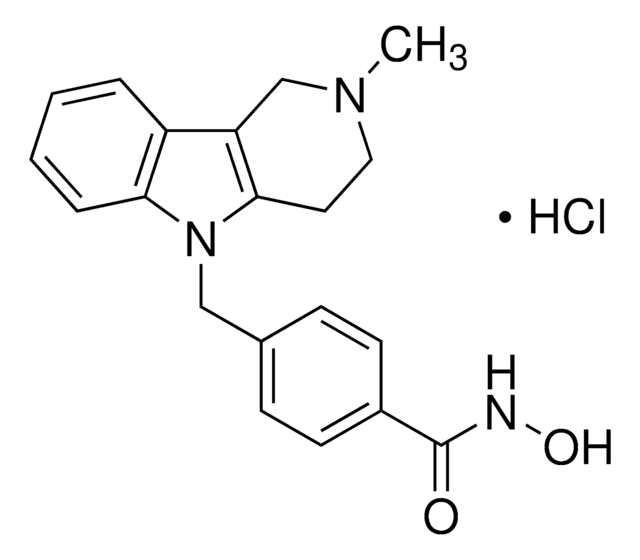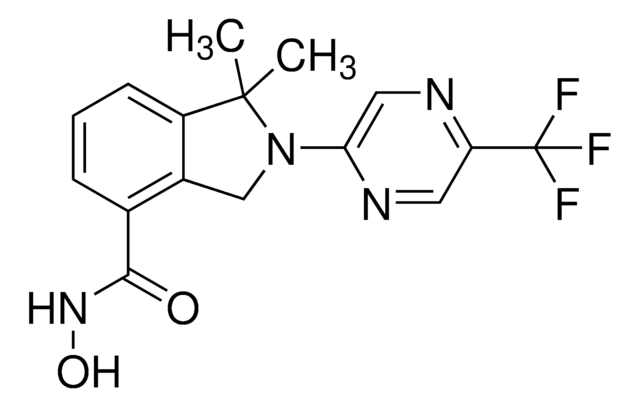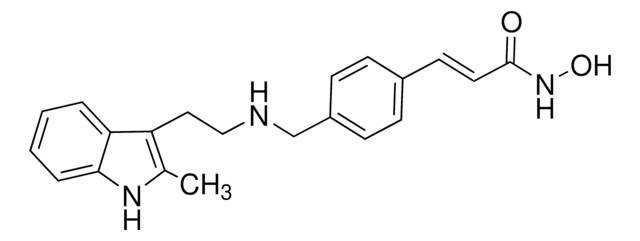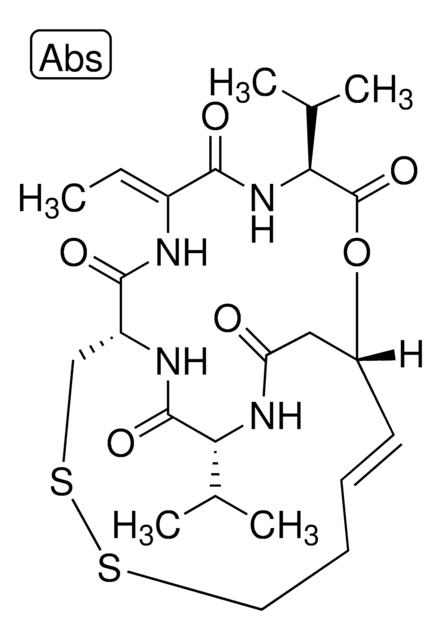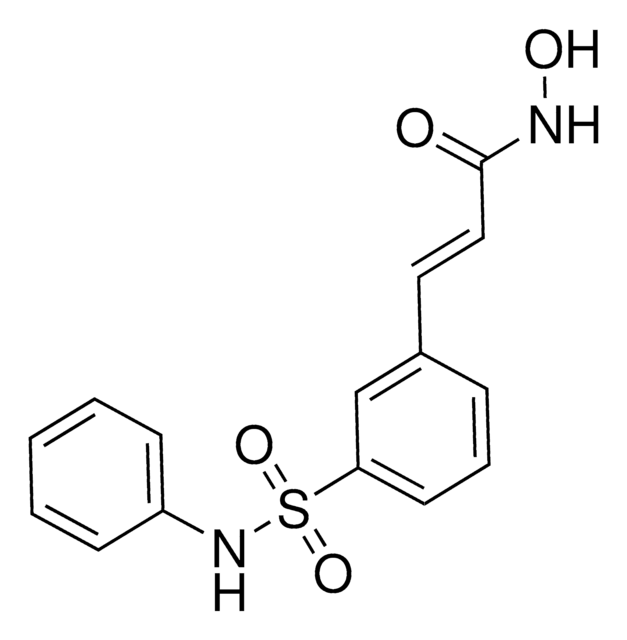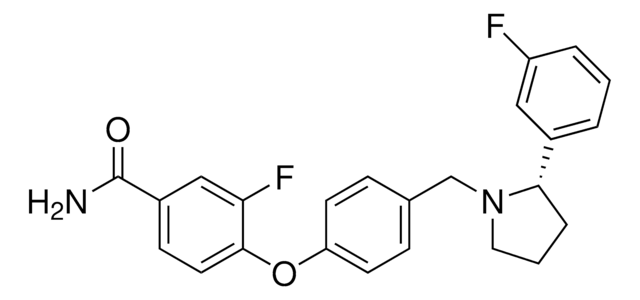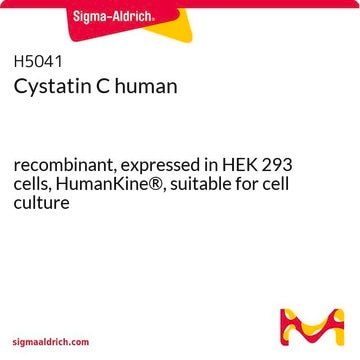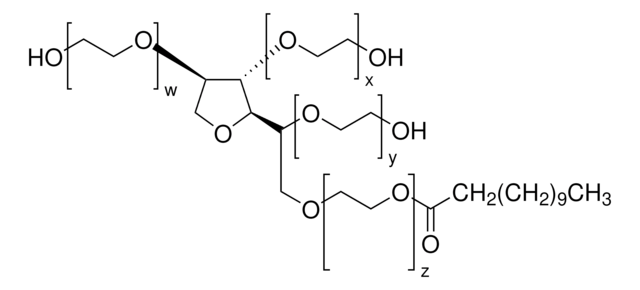SRP3102
Klotho human
recombinant, expressed in CHO cells, ≥98% (SDS-PAGE), ≥98% (HPLC), suitable for cell culture
Synonym(s):
KLA
Sign Into View Organizational & Contract Pricing
All Photos(1)
About This Item
UNSPSC Code:
12352200
NACRES:
NA.32
Recommended Products
biological source
human
recombinant
expressed in CHO cells
assay
≥98% (HPLC)
≥98% (SDS-PAGE)
form
lyophilized
specific activity
0.5—2.0 μg/mL
mol wt
65-70 kDa
packaging
pkg of 20 μg
technique(s)
cell culture | mammalian: suitable
impurities
<0.1 EU/μg endotoxin, tested
color
white to off-white
suitability
suitable for molecular biology
UniProt accession no.
shipped in
wet ice
storage temp.
−20°C
Gene Information
human ... KL(9365)
General description
Research area: Cancer
Human Klotho exists in both membrane-bound and secreted forms, and is predominantly expressed in the kidney convoluted tubules, and to a lesser extent, in the brain, reproductive organs, endocrine glands, urinary bladder, skeletal muscle, placenta, and colon. The full-length transmembrane form has a large extracellular domain composed of two homologous subunits termed KL1 and KL2, which contain 516 and 439 amino acid residues, respectively, The predominant circulating form, which is derived from alternative RNA splicing, contains the KL1 subunit and constitutes the N-terminal sequence of transmembrane Klotho. A third Klotho protein of about 128kDa has been identified in the blood and cerebrospinal fluid. This circulating protein arises from the action of an as yet unidentified protease which cleaves transmembrane Klotho just above and/or within the plasma membrane. Recombinant human Klotho is a 65-70kDa glycoprotein containing 516 amino acid residues.
Human Klotho exists in both membrane-bound and secreted forms, and is predominantly expressed in the kidney convoluted tubules, and to a lesser extent, in the brain, reproductive organs, endocrine glands, urinary bladder, skeletal muscle, placenta, and colon. The full-length transmembrane form has a large extracellular domain composed of two homologous subunits termed KL1 and KL2, which contain 516 and 439 amino acid residues, respectively, The predominant circulating form, which is derived from alternative RNA splicing, contains the KL1 subunit and constitutes the N-terminal sequence of transmembrane Klotho. A third Klotho protein of about 128kDa has been identified in the blood and cerebrospinal fluid. This circulating protein arises from the action of an as yet unidentified protease which cleaves transmembrane Klotho just above and/or within the plasma membrane. Recombinant human Klotho is a 65-70kDa glycoprotein containing 516 amino acid residues.
Application
Klotho human has been used to study the role of klotho in liver cancer.It has also been used in qualitative and quantitative analysis of Klotho protein by immunoblot and enzyme-linked immunosorbent assay (ELISA) tests respectively, in the heart tissue and coronary effluents to test the contribution of Klotho protein in cardioprotection during ischemia/reperfusion injury.
Biochem/physiol Actions
Klotho (KL) is a glycosylated protein that plays an important role in the regulation of phosphate and calcium homeostasis. Klotho has been shown to play a key role in the signaling cascade of fibroblast growth factor-23 (FGF-23), a bone derived hormone that acts in the kidney to inhibit phosphate reabsorption and vitamin D biosynthesis. Klotho promotes FGF-23 signaling through binding to FGFRI (IIIc) which converts this canonical FGF receptor into a specific receptor for FGF-23. In the absence of klotho, the function of FGF-23 is abolished. Klotho might play a protective role in type 1 diabetes mellitus against atherosclerosis and endothelial dysfunction. Absence of klotho in mice causes age-associated traits, such as short lifespan, atherosclerosis, pulmonary emphysema, and osteoporosis. It is also involved in cervical, lung, and breast cancer. In follicular thyroid cancer, it suppresses growth and enhances cell death by controlling the expression of stanniocalcin-1.
Sequence
EPGDGAQTWA RFSRPPAPEA AGLFQGTFPD GFLWAVGSAA YQTEGGWQQH GKGASIWDTF THHPLAPPGD SRNASLPLGA PSPLQPATGD VASDSYNNVF RDTEALRELG VTHYRFSISW ARVLPNGSAG VPNREGLRYY RRLLERLREL GVQPVVTLYH WDLPQRLQDA YGGWANRALA DHFRDYAELC FRHFGGQVKY WITIDNPYVV AWHGYATGRL APGIRGSPRL GYLVAHNLLL AHAKVWHLYN TSFRPTQGGQ VSIALSSHWI NPRRMTDHSI KECQKSLDFV LGWFAKPVFI DGDYPESMKN NLSSILPDFT ESEKKFIKGT ADFFALCFGP TLSFQLLDPH MKFRQLESPN LRQLLSWIDL EFNHPQIFIV ENGWFVSGTT KRDDAKYMYY LKKFIMETLK AIKLDGVDVI GYTAWSLMDG FEWHRGYSIR RGLFYVDFLS QDKMLLPKSS ALFYQKLIEK NGFPPLPENQ PLEGTFPCDF AWGVVDNYIQ VSQLTKPISS LTKPYH
Physical form
Lyophilized from 15 mM Sodium Phosphate pH 7.3.
Reconstitution
Centrifuge the vial prior to opening. Reconstitute in water to a concentration of 0.1- 1.0 mg/ml. Do not vortex. This solution can be stored at 2-8°C for up to 1 week. For extended storage, it is recommended to further dilute in a buffer containing a carrier protein (example 0.1% BSA) and store in working aliquots at -20°C to -80°C.
wgk_germany
WGK 3
flash_point_f
Not applicable
flash_point_c
Not applicable
Certificates of Analysis (COA)
Search for Certificates of Analysis (COA) by entering the products Lot/Batch Number. Lot and Batch Numbers can be found on a product’s label following the words ‘Lot’ or ‘Batch’.
Already Own This Product?
Find documentation for the products that you have recently purchased in the Document Library.
Customers Also Viewed
Klotho inhibits human follicular thyroid cancer cell growth and promotes apoptosis through regulation of the expression of stanniocalcin-1.
Dai D, et al.
Oncology Reports, 35, 552-558 (2016)
The beta-glucuronidase klotho exclusively activates the epithelial Ca2+ channels TRPV5 and TRPV6.
Lu P, et al.
Nephrology, Dialysis, and Transplantation, 23, 3397-3402 (2008)
Is serum Klotho protective against atherosclerosis in patients with type 1 diabetes mellitus?
Keles N, et al.
Journal of Diabetes and Its Complications, 30, 126-132 (2016)
Makoto Kuro-o
Trends in endocrinology and metabolism: TEM, 19(7), 239-245 (2008-08-12)
Endocrine fibroblast growth factors (FGFs) control a variety of physiological processes including suppression of bile acid synthesis in hepatocytes, promotion of lipolysis in adipocytes, and inhibition of phosphate reabsorption and vitamin D biosynthesis in renal tubular cells. Endocrine FGFs require
Secreted Klotho and FGF23 in chronic kidney disease Stage 1 to 5: a sequence suggested from a cross-sectional study.
Pavik I, et al.
Nephrology, Dialysis, and Transplantation, 28, 352-359 (2013)
Our team of scientists has experience in all areas of research including Life Science, Material Science, Chemical Synthesis, Chromatography, Analytical and many others.
Contact Technical Service